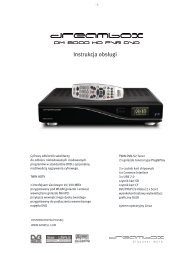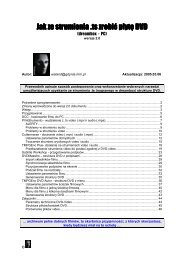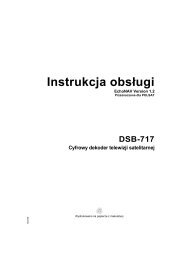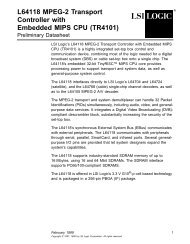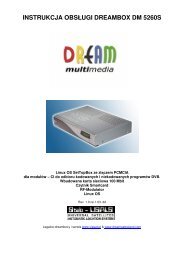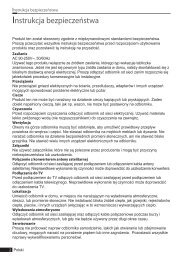Create successful ePaper yourself
Turn your PDF publications into a flip-book with our unique Google optimized e-Paper software.
TS5, <strong>BCT</strong>-<strong>1510</strong>, <strong>BCT</strong>-<strong>1520</strong>,<br />
<strong>BCT</strong>-<strong>1530</strong><br />
•Pin Function (3/3)<br />
56<br />
DTE USER<br />
NAME PIN TYPE DESCRIPTION<br />
EXCLK 22 I EXTERNAL CLOCK: This signal is used in synchronous<br />
transmission when the external timing option has been<br />
selected. In the external timing mode the rising edge of<br />
EXCLK is used to strobe synchronous DPSK transmit data<br />
applied to on the TXD pin. Also used for serial control<br />
interface.<br />
RXCLK 26 O RECEIVE CLOCK: The falling edge of this clock output is<br />
coincident with the transitions in the serial received data<br />
output. The rising edge of RXCLK can be used to latch the<br />
valid output data. RXCLK will be valid as long as a carrier is<br />
present.<br />
RXD 25 O RECEIVED DATA OUTPUT: Serial receive data is available<br />
on this pin. The data is always valid on the rising edge of<br />
RXCLK when in synchronous mode. RXD will output constant<br />
marks if no carrier is detected.<br />
TXCLK 21 O TRANSMIT CLOCK: This signal is used in synchronous<br />
transmission to latch serial input data on the TXD pin. Data<br />
must be provided so that valid data is available on the rising<br />
edge of the TXCLK. The transmit clock is derived from<br />
different sources depending upon the synchronization mode<br />
selection. In internal mode the clock is generated internally. In<br />
external mode TXCLK is phase locked to the EXCLK pin. In<br />
slave mode TXCLK is phase locked to the RXCLK pin.<br />
TXCLK is always active.<br />
TXD<br />
.<br />
24 I TRANSMIT DATA INPUT: Serial data for transmission is<br />
applied on this pin. In synchronous modes, the data must be<br />
valid on the rising edge of the TXCLK clock. In asynchronous<br />
modes (1200/600 bps or 300/1200 baud) no clocking is<br />
necessary. DPSK data must be 1200/600 bps +1%, -2.5% or<br />
+2.3%, -2.5 % in extended over speed mode.<br />
ANALOG INTERFACE AND OSCILLATOR<br />
NAME PIN TYPE DESCRIPTION<br />
RXA 32 I Received modulated analog signal input from the telephone<br />
line interface.<br />
TXA1 / TXA 2 18 / 17 O (differential) Transmit Analog. These pins provide the analog<br />
output signals to be transmitted to the telephone line. The<br />
drivers will differentially drive the impedance of the line<br />
transformer and the line matching resistor. An external hybrid<br />
can also be built using TXA1 as a single ended transmit<br />
signal.<br />
XTL1 / XTL2 3 / 4 I These pins are for the internal crystal oscillator requiring a<br />
11.0592 MHz parallel mode crystal. Load capacitors should<br />
be connected from XTL1 and XTL2 to ground. XTL2 can also<br />
be driven from an external clock.<br />
OH 27 O OFF-HOOK RELAY DRIVER: This signal is an open drain<br />
output capable of sinking 40 mA and is used for controlling a<br />
relay. The output is the complement of the OH register bit in<br />
the ID Register.






